The hyacinth flower is a perennial plant of the genus of the mudflows of asparagus. Such an unusual name of the flower was received in honor of the hero of one of the ancient Greek myths.
Hyacinths are early spring plants. North Africa is considered the homeland of these flowers, as well as the Mediterranean. However, the Holland has most influenced the popularization of this plant, so this country can be called the world leader in the cultivation of hyacinths.
Dense bulbs of hyacinths are made up of sufficiently dense and wide leaves, the blooming stem has a height of about 30 cm. After flowering, the stalk suits together with the leaves that are directed up.
The Hyacinth Flowers themselves are assembled into the topless inflorescences that form a cylindrical or conical shape. As for the shades of the color of the plants, then it can be red, pink, lime, blue shades. Flower fruit is a three-year, and in each nest there are 2 seeds with a fairly tender skin.
In this article, we will consider in detail the specifics of landing and care for hyacinths, as well as analyze other features of this unique plant.
Types and varieties of hyacinths
At home, as well as in the gardens, hyacinths are grown for 400 years. It was even recently believed that this plant has 30 species and about 500 varieties, but after some manipulations associated with the transfer to another genus, this amount decreased slightly.
- Blue hyacinths. The following 3 varieties are most popular: Perle Brillante, Marie, Queen of The Blues. The first is the late hyacinth with a bluish tint, the second is an early grade with purple stripes, and the latter is a medniece plant with a light bluish tint.
- Pink hyacinths. Moreno is an early grade that boasts pink-raspberry flowers. Gertruda - This late variety differs significantly from other hyacinths of a pleasant dark pink color. Mednical grade Anna Marie has light pinkish flowers.
- White hyacinths. Madame Sophie is a medniece variety of prevalence due to terry white flowers that differ significantly from other hyacinths. From the name Snow Crystal it becomes clear that this is a bright white plant, blooms late. An early variety Arenine Arendsen has a white color, but sometimes it is happy with a cream tint.
- Casualizing hyacinths. Bismarck - early grade with pale flowers, also having a bright longitudinal strip. Blue Magic grade is a purple-violet firmware plant. Indigo King is a late grade of hyacinth, which differs in black and purple color.
- Yellow hyacinths. Oranje Boven is a medniece flower, characterized by an apricot color, and in the edges there are areas of pink. Late City of Haarlem variety has a light yellow shade flowers. Yellow Hammer is a medniece variety of bright yellow flowers.
Now it becomes clear that such a variety of varieties creates greater freedom of action for many gardeners. Well, the most important thing is that not all the varieties are not above, as they are too much. If it is necessary that the plant bloom before, you need to make a choice in favor of the blue variety, while yellow and orange plants are distinguished later than blossom.
Landing hyacinth
- Directly the process of planting hyacinths to the ground occurs at about late September, or early next month. If the landing earlier, the hyacinths will begin to grow too actively, and ultimately it turns out that winter cold these plants are unlikely to be transferred. If you make a bet on the winter landing, then the flowers simply do not have time to root, and they will again be at risk of gibbles.
- The preparation of the soil for landing of hyacinths is quite laborious. At first, the soil preparation occurs, which includes the replenishment of the territory to a depth of up to 40 cm. It also requires the introduction of mineral fertilizers (this is approximately 70 g of superphosphate, 15 g of Magnesium sulfate, 30 g of potassium sulfate). It will also require a three-year humus, which should significantly speed up the ascent of hyacinths after landing (used approximately 10-15 kg per square meter of the territory - depending on the landing space). It may also be useful to make peat or sand. It often happens that the soil is a sandy basis, which, to great regret, creates a lot of difficulties in planting and growing any cultures. In this case, it is advisable to increase the amount of mineral fertilizers by about one and a half times. You can also take advantage of nitrogen fertilizers, but it is advisable to make in spring and already in the summer, which will be subcord.
- The choice of bulbs for landing should be quite serious, since the most active growth is shown by small plants. The average size of the bulbs demonstrates a good resistance to harsh weather conditions, but otherwise these plants show themselves somewhat worse in the process of growth. Experts recommend throwing soft bulbs, which, with high probability, do not demonstrate active growth, and, most likely, will die at the first opportunity.
- Immediately before planing the bulbs, it is necessary to withstand in a solution of fungicide. It is a bit "challenge" the plant and make it more resistant to external factors.
- The landing is made to a depth of 18 cm, and the distance between the plants should not exceed 15 cm. If the landing is performed by rows, then the distance between them should not be greater than 20 cm. If the bulbs used for the landing are too modest, it is necessary to increase the lifetime, And at the same time, reduce landing depth.
- After creating a well to the bottom, a thin (up to 5 cm) layer of river sand is added. In this very layer it will be necessary to press the bulb, and then again make a snowing in the sand, and then the soil. Such a simple solution allows you to get rid of the problems associated with water in the soil. Accordingly, the risk of bulbs is reduced. After planting the soil often turns out to be dry, therefore it makes sense to make watering.
Specificity of care for hyacinths
Many gardeners note that care for hyacinths is characterized by simplicity, but at the same time, attention should be paid to those matters when they need to have any care events, you need to immediately.
- First of all, it should be remembered that hyacinths are clean plants that need to immediately remove weeds and other plants that prevent rapid development.
- Regular soil looser is required. However, it is possible to simplify this case, if initially, after landing, make the soil mulch.
- Watering hyacinths do not need to be performed regularly. Practice shows that this should only be engaged in a drying time when plants really lack liquid. In this case, only one requirement: the soil layer should be moistened by 20 cm.
- Questions related to feeding, quite voluminous. It is necessary to carry out about 2-3 times during the growing season. Could be used both dry mixtures and conventional solutions. Dry fertilizers will need to be located all over the soil, and after that it is embedded in the ground with a rag. As for the periods when it is necessary to use fertilizers, first of all fertilizer's application occurs at the beginning of growth (up to 20 g of superphosphate and up to 25 g of nitrate to 1 square meter), then the feeding occurs during the bootonization period (up to 20 g of potassium sulfate, up to 35 Superphosphate), well, the third fake is conducted at the end of the hyacinth flowering (up to 35 g of superphosphate).
Features of transplanting hyacinths
Often, the owners need to make a transplant of certain plants, and in the case of hyacinths, all this happens quite simple. Plant digging occurs in the summer period, already when the flowering ended. Accordingly, these plants are stored until the fall, and during this time of year and the landing is made to a new place. The main requirement here consists in digging flowers after the growing season when hyacinths restore their forces.
Giacintov reproduction
Specialists are reproduced by hyacinths on bulbs-kids and seeds. In the autumn period, the seeds need to be sown into specially prepared boxes filled with soil (1 part of the sand, 1 part of the leaf land and 2 parts of humus). In such a format, plants are cultivated for two years in a cold greenhouse.
The process of increasing children in the bulbs of hyacinth occurs quite slowly, about 3 kids per year. If the separation from the maternal bulb occurs easily, they should be delated and moving.
It is important to note that in industrial flower growing the process of growing is somewhat different from what is indicated above. There is cutting and cutting of the Donets. As a result, it is possible to storage in which new kids are formed. Surprisingly, with such cultivation on one bulb, up to 40 kids may form.
Pests and hyacinth diseases
Fortunately for many gardeners, hyacinths are extremely rarely suffering from various diseases, therefore those owners who do not pay plants too much, this advantage of hyacinths will have to taste. However, the troubles happen, and here are their main reasons:
- Infected planting material. If it is decided to produce hyacinth reproduction, it is necessary to accommodately approach the choice of the source plant. It should not have the slightest signs of diseases or some damage.
- Unfavorable soil for landing. If there were already plants on the site that had some infection, it is likely that there will be problems in the future on a specific territory. First of all, it is due to the remnants of the traces of diseases in the ground, so it is advisable to make some cleaning.
- Squeeze soil. High acidity is often obtained by a serious threat to plant crops, and in the case of the threat hyacinths really large-scale.
- Thorough landing. This is a fairly widespread gardener error that do not have enough experience to carry out the landing. The above recommendations for the lifelong landing of hyacinth should be followed. Otherwise, the plant may not start their development at all.
- Using fresh organic. It is categorically not recommended to use this fertilizer for hyacinths, since it will not affect the plant with high probability, and at the same time, various pests will begin its "black" case.
As for the disease themselves, the following are most often found:
- Yellow bacterial rot. This ailment creates too serious problems associated with the conversion of bulbs in the mucus. It is important to note that it is quite simple to notice the progression of this disease. Most often, the affected hyacinths are simply lagging behind the growth plan from neighboring plants. If the plants have already become a victim of bacterial rot, the plant should be digging and burning it, and the pit in which landing was performed is risening with chlorine lime.
- Peniclinic rot. This is a fungal disease that is easy to detect, as the plant is simply covered with white lime, after which the flower rotting and drying occurs. You can fight this illness and you need, and the most often used copper-containing drugs.
- Floral flies. These pests can create a lot of hyacinth problems. In the shortest possible time, they can eat the diacon of the bulbs, after which hyacinths may die. To cope with floral flies, you need to use the drug "Tabazol" or "Mogyoad".
- Medved. This pest is often powered by the root system of the plant. However, it is enough to cope with this problem, it is only necessary to carry out the mulching of the soil.
Care after flowering
It should be borne in mind that after a period of flowering from gardeners really depends a lot. A person must do everything possible so that the bulbs restore their strength. For some time, they must stay in the ground.
Special attention should be paid to fading hyacinths. First of all, you should take care of watering. It should gradually shrink so that in the end it stopped at all. At the same time, you need to make feeding, which is based on mineral fertilizers. As a result, the bulbs should receive nutrients that should be enough for flowering next season. It is necessary to dig hyacinths when the yellowed leaves appear.
Shooting plants
Experts are recommended to produce hyacinths every year, otherwise the bloom may be much weaker next year. In addition, if you do not make digging, then hyacinths can be at all a victim of various diseases.
Digging is shovel, but carefully. The shovel is needed primarily for the reason that the bulbs are located in the ground quite deeply. Next occurs plants under water. Now the bulbs should be treated using a carbofos solution. As a last resort, you can simply hold the plant for 10 minutes in water heated to 50 degrees. After that, drying and ventilation of the bulbs in a darkened place at a temperature of 20 degrees Celsius occurs.
Also worth a couple of words to say on the storage of bulbs. When the inflorescences form occurs, it is necessary to clean the bulbs from the remains of the roots and scales, after which there is a decay in boxes.
You can use small pots for storage. If the bulbs are too small, then small paper bags will fit. The first 2 months storage occurs at a temperature of up to 26 degrees, and during the third month it is necessary to reduce the temperature to 17 degrees. Air humidity should not be too low. An important requirement for high-quality storage of bulbs is the need for good air ventilation. Approximately a week before the landing should keep the bulbs at a temperature that corresponds to the place of the future landing.

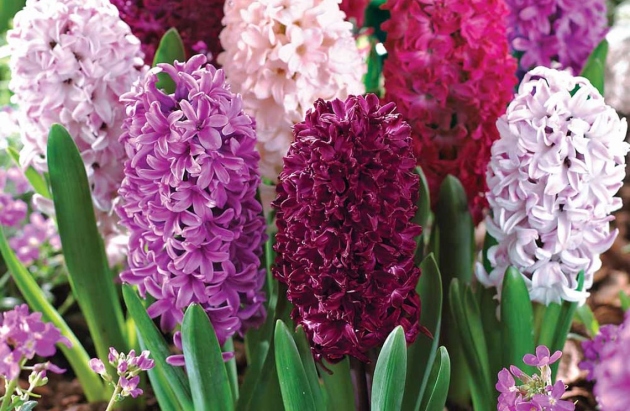
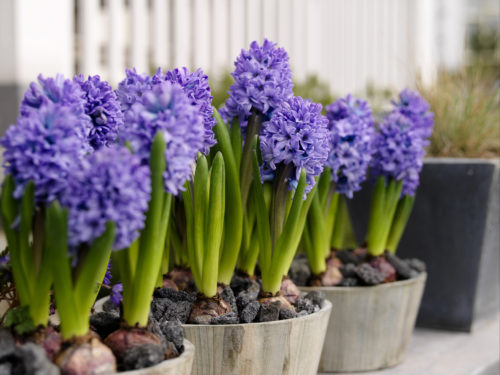
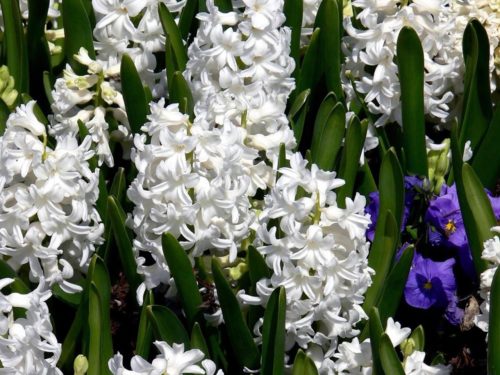
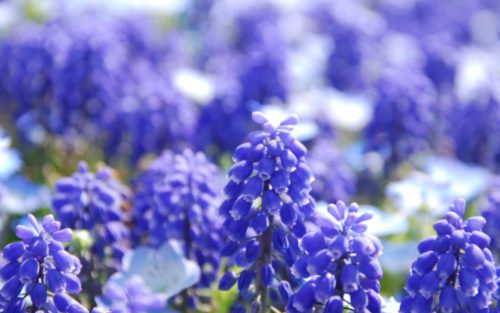
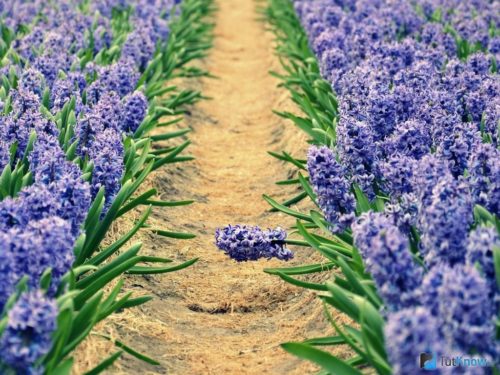
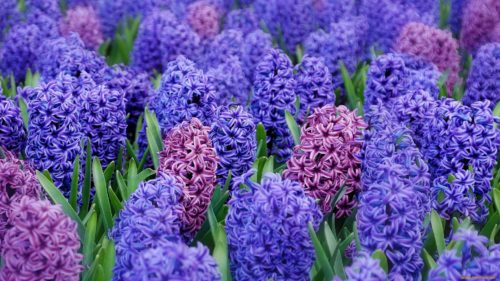












 Start a discussion ...
Start a discussion ...